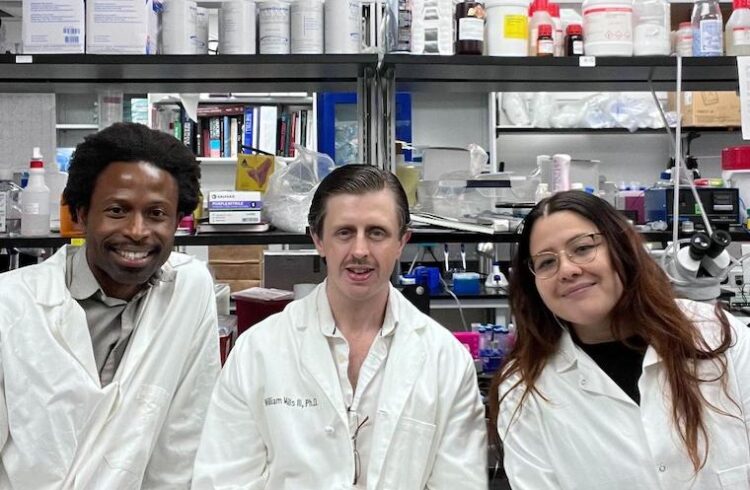
A new discovery about how dying cells are removed from the body could have an unexpected and important benefit: allowing doctors to rehabilitate a powerful antibiotic now deemed too toxic for human use.
Despite showing great initial promise, the antibiotic trovafloxacin was pulled from the market in the U.S. because of concerns about its toxicity. New research from the University of Virginia School of Medicine appears to explain part of the cause of that toxicity and points to potential ways to overcome it, so that the antibiotic – and others like it in that family of antibacterials – could be made safer for human use.
“The increase of drug resistance to antibiotics is one of the biggest threats to human health in the next 10 years. Yet the number of new antibiotics that are developed is extremely few,” said UVA researcher Kodi S. Ravichandran, PhD. “The reason a number of the older antibiotics have been shelved is toxicity. So perhaps if we better understand how this toxicity arises in those molecules, and by removing the bad parts and keeping the good parts, we might be able to find more usable antibiotics.”
Antibiotic toxicity
At least part of the reason for trovafloxacin’s toxicity, the findings suggest, is that it inhibits critical channels for intercellular communication known as pannexin channels. These channels play an important role in many different cell types in the body, and the researchers were hoping to find ways to either inhibit or enhance their function using a library of 1,280 existing drugs, including trovafloxacin.
The new findings suggest that pannexin channels play an important role in controlling how long a dying cell remains whole and when it breaks apart into smaller fragments. Normally, dying cells are removed from the body by the janitorial cells known as phagocytes. “Some cell types are ingested by a phagocyte as a whole; others seem to fall apart in pieces, at different times in the death process, and then those pieces get removed,” explained Ravichandran, chairman of the Department of Microbiology, Immunology and Cancer Biology. “Sometimes a phagocyte is too small to eat a very large particle. It cannot eat them in one piece, so it takes them in bite-sized fragments and chews them up in small pieces.”
“We really have very little understanding of how and when a dying cell forms smaller pieces, and how this influences their subsequent removal or other consequences in the tissue milieu,” he said.
Cells, falling to pieces
The pannexin channels appear to control the timing of when these dying cells fall apart. When these channels are blocked — by trovafloxacin and other similar drugs — the cells are less able to hold themselves together, the researchers found. “The pannexin-regulated process by which cells preserve their integrity during the final throes of death had not previously been observed, and it will be exciting to understand how pannexin channel activity controls cell disassembly,” said study co-author Douglas A. Bayliss, PhD, chairman of the Department of Pharmacology.
Even though trovafloxacin by itself did not induce apoptosis (cell death), given that humans turn over roughly 200 billion cells a day — at the rate of about 1 million cells per second — the blocking by trovafloxacin could interfere with this routine and useful cellular cleanup.
The researchers hope to use the information on how trovafloxacin blocks these channels to re-engineer it and other antibiotics in the quinolone family to lessen toxicity concerns.
“Dr. Ravichandran’s findings demonstrate how new insights into biological mechanisms can come from studying the off-target effects of known drugs,” said Sarah Dunsmore, PhD, of the National Institute of Health’s National Institute of General Medical Sciences, which partially funded the research. “These results also provide a new means of determining drug toxicity that may be helpful in the evaluation of existing antibiotics, as well as defining key molecular structures that may produce targets for new antibiotics.”
Published in Nature
The findings have been published as a full article online by Nature and will appear in the March 20 print edition of the prestigious journal. The article was authored by Ivan K.H. Poon, Yu-Hsin Chiu, Allison Armstrong, Jason Kinchen, Ignacio Juncadella, Bayliss and Ravichandran.
The National Institute of General Medical Sciences grant was No. 1R01GM107848.



